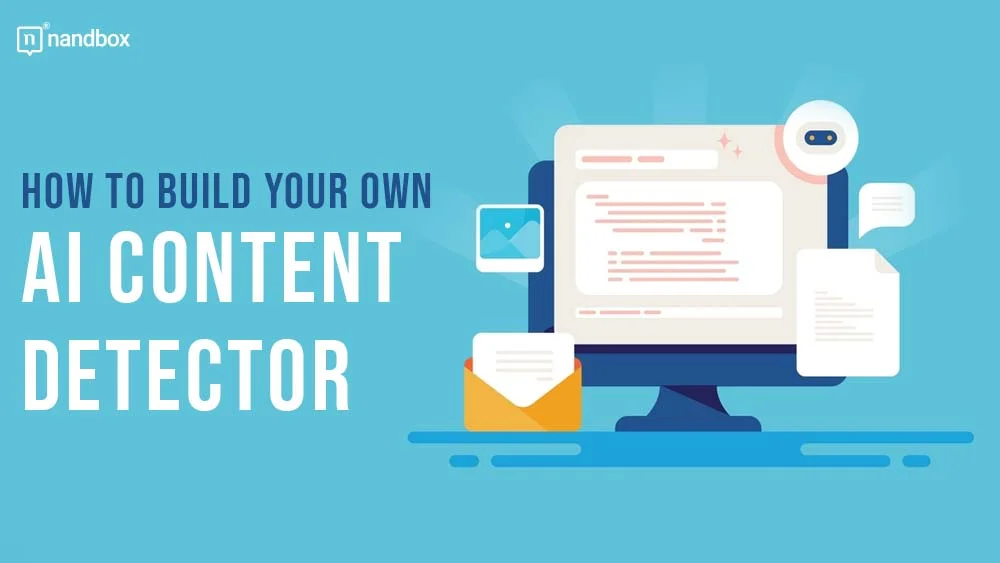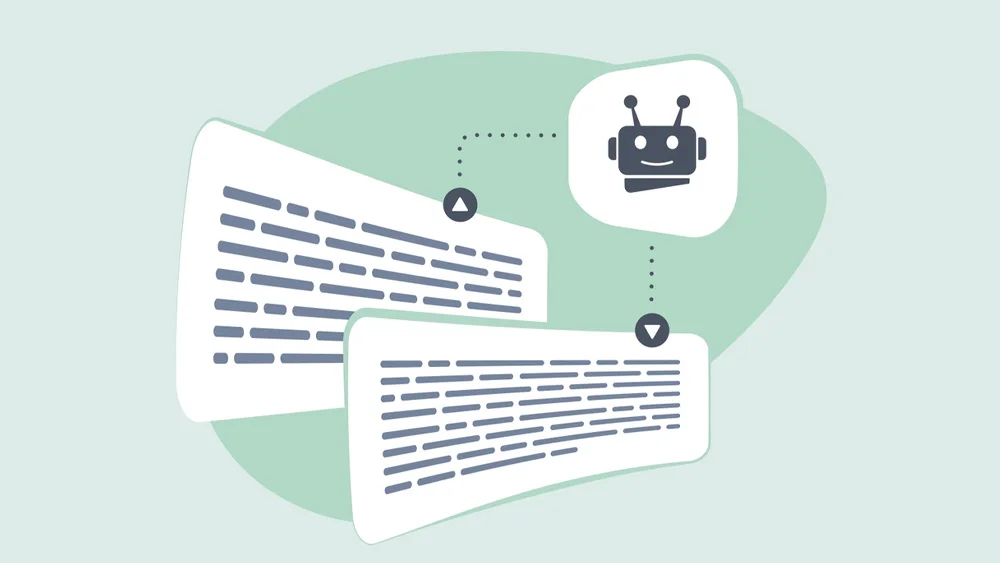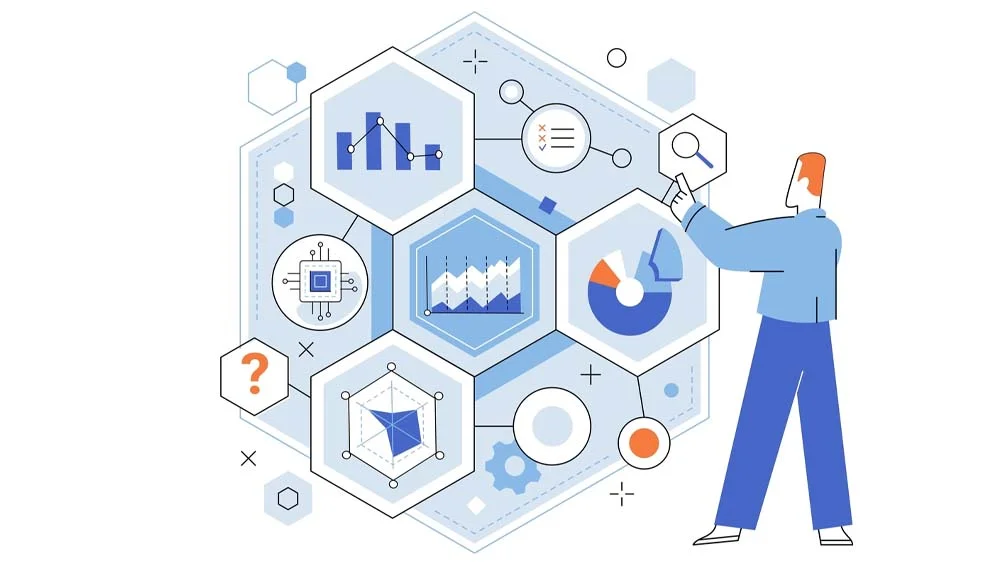Artificial intelligence (AI) is progressing quickly as tools can create content similar to that of humans on numerous subjects. Fears emerge about using AI-generated text to convey false information or to produce mediocre content in bulk. People are increasingly showing curiosity in establishing AI detectors capable of examining text and confirming its origins. Developing an AI detector enables you to configure it to fulfill your specific demands. You have the chance to customize it for the type of content you manage every day and boost its effectiveness in recognizing AI-written text in your sector.
Understanding AI Text Generation
Before developing an AI detector, it helps to understand how advanced AI text generation works. GPT -4 allows one to learn from enormous collections of online text authored by individuals. They acquire the styles and rules of natural speech so they can create results with an eerily human character.
Some key points about modern AI text generation:
- Large language models – billions of parameters, trained on internet text datasets containing trillions of words.
- Neural networks – the models use deep learning neural networks to extract patterns from immense datasets.
- Generates from prompt – users provide a prompt and the model continues generating relevant text that fits the pattern.
- Lacks world knowledge – the systems have little actual understanding of the world or the text they generate.
While the outputs can seem fluent and convincing on the surface, AI text often lacks deeper coherence, accuracy, and the consistency you would expect from a human writer knowledgeable about a topic. You can exploit these weaknesses in building a detector. To address this challenge, tools like Smodin have been developed to help identify AI-generated content by analyzing text patterns and characteristics that differ from human-written material.
Evaluating Your Needs
Before diving into development, clearly define:
- Use case. Will this detector need to analyze marketing content? Academic papers? Journalism? Social media posts? Each domain has unique challenges.
- Performance targets. What are your goals for accuracy, speed, and capability to scale? Do you need real-time analysis of streams of content?
- Integrations. How will the detector fit into your existing pipelines and systems? Does it need to provide an API for programmatic access?
With clear requirements defined, you can focus on the areas that matter most and tailor the detector to your specific use case.
Collecting a Dataset
Like any machine learning application, an AI detector is only as good as its training data. You need a diverse corpus of text examples to teach the system what human and AI writing looks like within your domain.
Human-Written Examples:
- Gather a large set (thousands preferably) of real human-written pieces representative of the content you want to analyze.
- Pull examples from reliable sources – recognized experts and high-quality publications within your field.
- Cover the full range – content type, topics, styles, complexity, etc.
- Clean the data – remove incomplete samples, formatting issues, etc.
Diverse, high-quality samples are essential for the system to learn the intricacies of human writing.
AI-Generated Examples:
- Use several commercial AI tools (Smodin, GPT-3, Jasper, etc) to produce a wide array of synthetic samples.
- Vary the outputs in length, style, and topic to cover the spectrum.
- Generate more simplistic samples – they will likely cause more detectable errors.
- Label all samples clearly as “AI-generated”.
You need sufficient AI examples to reveal the weaknesses for your detector to exploit.
Feature Engineering
Text samples must be processed through review before entering a machine learning model. First, you have to develop characteristics that reveal key distinctions between human and AI writing.
Useful signals to measure include:
- Lexical diversity: Variation, and range of vocabulary used. AI text often repeats phrases and words.
- Semantic consistency: Coherence of concepts and meanings throughout the text. AI can stray off-topic.
- Factual accuracy: The correctness of factual statements made. AI can hallucinate false info.
- Logical flow: Cause/effect and temporal relationships in the narrative. AI statements may lack logical sense.
- Grammar issues: Mistakes in grammar, punctuation, etc. AI can fail language rules.
- Spelling errors: Incorrectly spelled words. Rare in human proofread writing.
Using your entire dataset to measure key signals creates meta-data for each piece that captures writing quality and pointers of perceived humanity versus AI. This method generates organized training data relating to various writing metrics for model construction.
Model Development
With engineered features representing scored quality signals for each piece of text, you can now train a machine-learning model to classify samples as either human or AI-written.
Some Effective Modeling Techniques Include:
- Random Forest: It is an ensemble of decision trees good for handling tabular training data.
- SVM (Support Vector Machine): A robust method for finding complex boundaries between classes.
- Neural Networks: A deep learning model that can self-learn complex textual representations.
Recommend trialing a few different model types during prototyping to see which has the best performance and suits your data characteristics.
For Training and Testing Your Model, Split Your Dataset Into Three Partitions:
- 60% training – used to train the model parameters to fit your data patterns.
- 20% validation – validate parameter choices and other decisions during development.
- 20% holdout test – unseen final test set to assess real-world performance.
As the model trains against more examples of human and AI text features, it will gradually learn how to distinguish between the two classes based on your engineered signals.
Operationalization
With a trained model that can accurately classify human vs AI writing in place, the final step is deploying it for real-world operation inside your production environment.
Key tasks include:
- Containerization: Package the model, code, and environment into a Docker container for portability.
- Cloud deployment: Host the containerized app on a cloud platform like AWS or GCP for easy scaling.
- Prediction API: Expose predictions via a web API that others can interact with programmatically.
- User interface: Build a UI for non-technical users to easily utilize the detector.
- Performance monitoring: Continuously monitor live production detector behavior.
By creating robust tooling around the trained model and exposing its capabilities via APIs, even non-engineers can benefit from using your custom AI detector in their workflows.
Maintaining Accuracy
Like any software system, developing an AI detector needs ongoing maintenance to keep it effective as the world changes:
- Model drift: Monitor overall accuracy over time. If it declines the model needs retraining.
- Data drift: Ensure your datasets remain representative as language and content evolve.
- Retraining cadence: Schedule regular model retraining and validation checks, e.g. every 2 months.
- Feedback loops: Allow users to flag incorrect predictions to augment training data.
You should expect an accuracy drop-off without ongoing tuning and adaptation as AI itself progresses. Maintain rigorous model governance and data version control practices to ensure long-term reliability.
Alternative Approaches
While training your own custom detector is powerful, there are also emerging commercial services that provide AI detection capabilities:
- Human-in-the-loop (HITL): services use a combination of AI and human input to verify content.
- Models-as-a-service (MaaS): companies offer models tailored to spot AI text.
- Browser extensions: browser plugins can flag potential AI content from social feeds.
There are also free and reliable tools like Attrock AI Content Detector and others that can help you assess AI-generated content without the need for extensive setup. These tools can offer convenience and save your team the effort of building expertise in AI detection. However, they lack the customizability of an owned system tailored to your domain.
Conclusion
As AI progresses quickly individuals and organizations must develop the skill to identify machine-generated texts. With machine learning and analysis of language skills, you can build reliable indicators suited to your demanding needs.
The approaches shown create a plan for establishing your future. Although it is challenging to undertake the work that pays off by providing content of higher trust with less threat from synthetic content. By developing a custom AI detector wisely and continuously over time you can maintain leadership and guarantee authorized text aligns with human principles.





